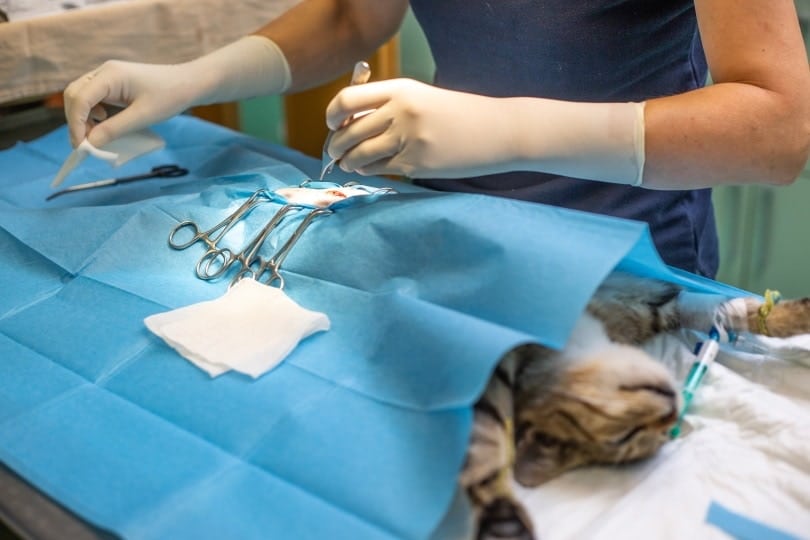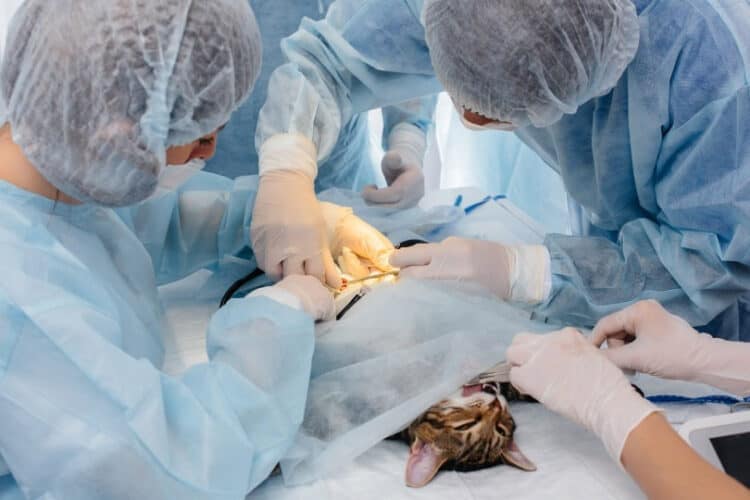The healthcare of our felines is one of the most important responsibilities that we cat owners take on. This includes any potential surgeries that they might need to undergo. One of the most common procedures for male cats is neutering.
While many pet owners understand that neutering is a surgical procedure to sterilize cats, not many know how veterinarians go about the process. Being new to cat ownership can make neutering sound concerning, so here’s an explanation of the procedure. We hope that it’ll help you decide whether to get your cat neutered.
What Is Neutering?

Also known as castration or an orchidectomy, neutering is a surgical procedure that removes the reproductive organs of a male cat. This usually occurs when your cat is still a kitten and before they reach sexual maturity, usually when they’re between 3 and 6 months old. Shelters and rescues also tend to neuter all the male cats — and spay the females — when they come in.
If you’re not interested in breeding your cat, getting them neutered is recommended for several reasons:
- Decreases unwanted behavior
- Limits roaming
- Promotes population control
- Prevents health issues
- Prevents spraying
- Reduces aggression
How Are Cats Neutered?
Once you’ve decided to have your cat neutered, the procedure is relatively simple. Your veterinarian will be able to answer any specific questions that you have and tell you how best to care for your cat after the procedure. They’ll also tell you how long you should withhold food before the appointment.
Pre-operative Blood Work
First, your veterinarian will examine your cat to make sure they’re healthy enough for the procedure. This can be done on the same day or the day before the planned surgery and includes a basic, in-house blood panel.
The bloodwork tells your veterinarian whether your cat is on any medications, is sick, or has any underlying health issues that might make the surgery too dangerous.
Anesthesia
Provided that the blood work comes back clean, your cat will move on to the next stage. The veterinarian will give your cat a general anesthetic and then remove the hair on your cat’s scrotum. To ensure that the area is clean enough for surgery, the skin is then scrubbed to sterilize it.
Your cat may also be given a painkiller and an IV, in which case your cat will also have a shaved area on one leg.
Surgery
Once the preparations are complete, the veterinarian will make two incisions on your cat’s scrotum — one on each side — to remove the testicles. To minimize bleeding, the testicular attachments are tied off before the testicles are removed with either a laser or scalpel.
The surgical incisions are relatively small and don’t often require stitches. If the incisions aren’t left open, surgical glue is often used instead of sutures because it’s less likely to irritate the skin around your cat’s scrotum.
Some cats may require more in-depth surgery if one or both testicles didn’t descend properly into the scrotum before they were born. In this case, your veterinarian will need to locate the testicles in your cat’s abdomen to remove them properly.
Post-Operative Care
Most of the time, neutering is a quick and easy procedure. Sometimes, your veterinarian may decide to keep them in the surgery overnight, but most cats are back home on the same day as the surgery.
After your cat has slept off the anesthesia and the painkillers, they’re usually back to their usual mischief the following day. That said, you should try to minimize the amount of mischief that your cat gets up to for the first 3–5 days following the surgery.
Post-operative care, especially at home, is important. While adverse reactions to the anesthesia are rare, for the first 24 hours following the surgery, you should keep a close eye on your cat. One sign of potential complications is not using the bathroom. If your cat doesn’t go at least once within a day of the surgery, you should contact your veterinarian.
Your veterinarian may prescribe pain medication for your cat following the surgery. This will help ease any discomfort that they feel and aid the healing process.
There’s also a risk of infection, especially when the incisions aren’t closed with surgical glue. Look out for discharge, heat, odor, swelling, or redness, and contact your veterinarian if you spot these symptoms. You can help reduce the risk of infection by following your veterinarian’s post-op care instructions. Prevent your cat from cleaning the area themselves by putting them in an E-collar.

Can Female Cats Be Neutered?
Both male and female cats can have surgery to prevent future reproduction, but the procedure for female cats is different. The surgery for female cats is called spaying. It’s a similar procedure to neutering but is slightly more complex and involves the removal of the female reproductive organs, including the ovaries and uterus.
The timing for spaying a female cat is debated. Some people believe that they should have at least one heat first, while others prefer to perform the surgery before that time.
Final Thoughts
Getting your cat neutered is a simple procedure in which the testicles are removed via two small incisions on the scrotum. The surgery helps prevent undesirable behavior caused by your male cat’s hormones, like spraying or seeking out female cats to mate.
While few complications typically follow the procedure, you should keep your cat indoors during their recovery and look out for signs of infection.
Featured Image Credit: Andrii Medvednikov, Shutterstock
















